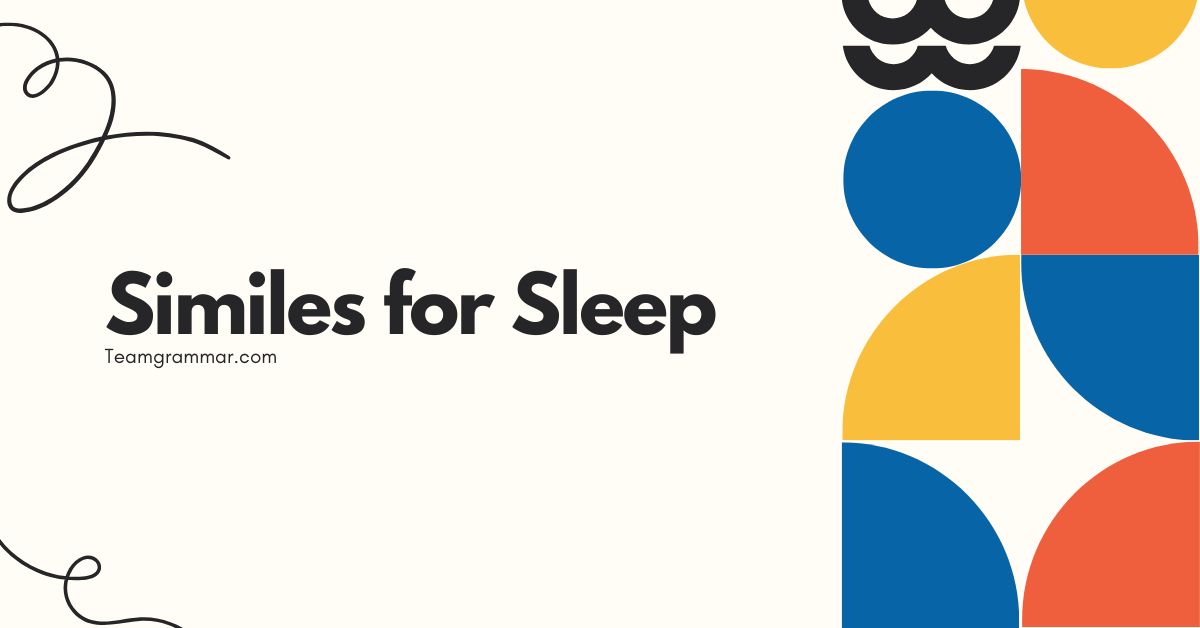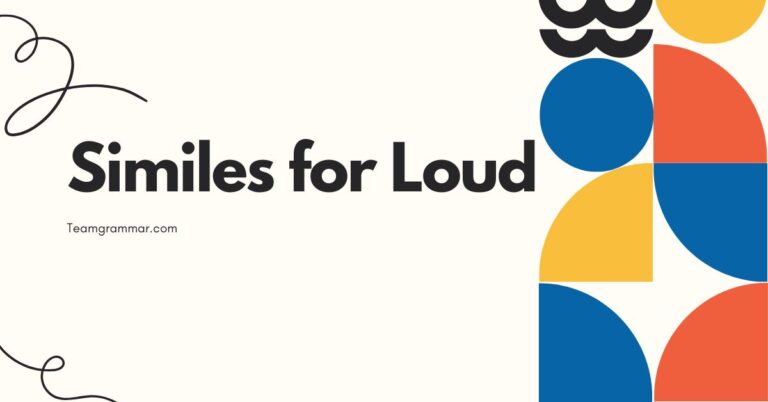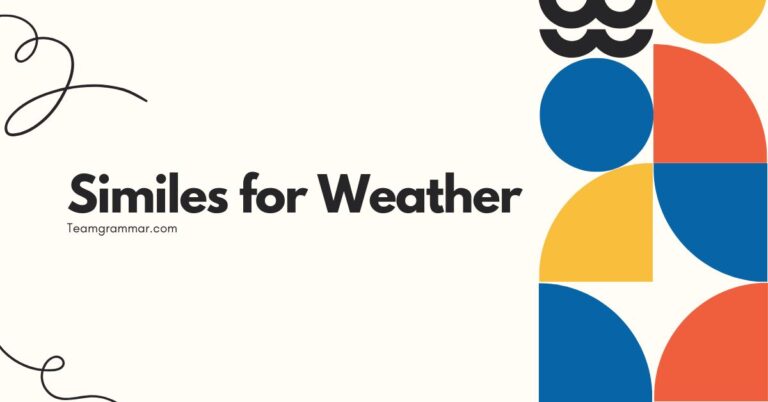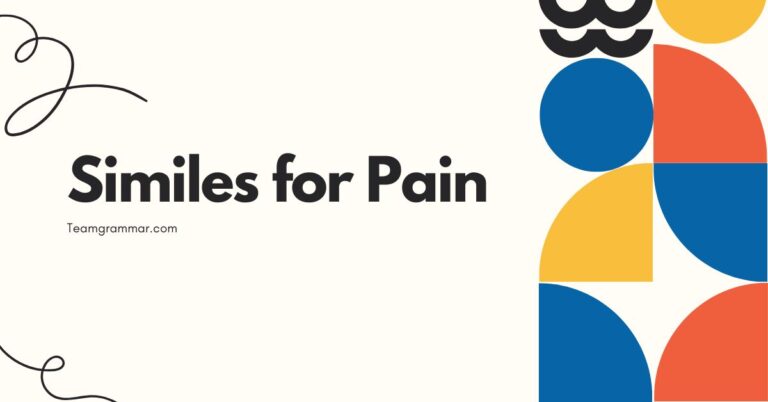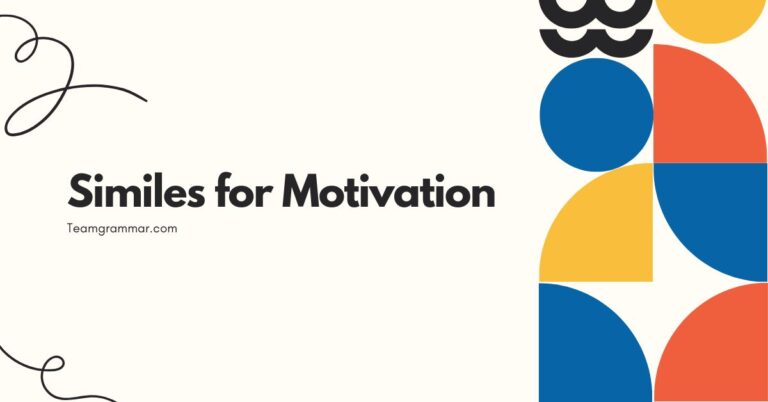49 Similes for Sleep: A Deep Dive into Comparative Language
Sleep, a fundamental human need, is often described using vivid and imaginative language. Similes, with their ability to draw comparisons, are particularly effective in conveying the quality and depth of sleep.
Understanding how similes function and how they are constructed can significantly enhance your descriptive writing and comprehension of figurative language. This article will provide a comprehensive guide to using similes to describe sleep, exploring various types, structures, and applications.
Whether you are a student, writer, or simply someone interested in the nuances of language, this guide will equip you with the knowledge and skills to use similes effectively.
Table of Contents
- Introduction
- Definition of Simile
- Structural Breakdown of Similes
- Types of Similes
- Examples of Similes for Sleep
- Usage Rules for Similes
- Common Mistakes with Similes
- Practice Exercises
- Advanced Topics in Similes
- Frequently Asked Questions
- Conclusion
Definition of Simile
Asimileis a figure of speech that directly compares two different things using the words “like” or “as.” The purpose of a simile is to create a vivid image or convey a specific quality by associating it with something familiar or easily understood. Similes are a type of figurative language, meaning they are not meant to be taken literally.
Their strength lies in their ability to evoke emotions and paint a picture in the reader’s mind.
Classification: Similes belong to the broader category of figures of speech, specifically under the umbrella of comparative language. They are closely related to metaphors, but unlike metaphors, similes make an explicit comparison using “like” or “as.”
Function:The primary function of a simile is to enhance description. By comparing something abstract or unfamiliar to something concrete and well-known, similes make concepts easier to grasp and more engaging.
In the context of describing sleep, similes can help convey the depth, quality, and experience of sleep in a way that is relatable to the reader.
Contexts:Similes are used in various contexts, including literature, poetry, everyday conversation, and advertising. They are particularly common in creative writing, where they add depth and richness to the text.
They are also used in persuasive writing to make arguments more compelling and relatable.
Structural Breakdown of Similes
A simile typically consists of three main components: the subject (the thing being described), the linking word (“like” or “as”), and the object of comparison (the thing the subject is being compared to). Understanding these components is crucial for constructing effective similes.
Subject: This is the noun or noun phrase that you are trying to describe. In the context of sleep similes, the subject might be “sleep,” “a sleeper,” or a specific aspect of sleep, such as “dreams.”
Linking Word: The linking word is either “like” or “as.” These words explicitly signal that a comparison is being made. The choice between “like” and “as” is often a matter of personal preference or stylistic consideration.
Object of Comparison:This is the noun or noun phrase that the subject is being compared to. The object of comparison should have a quality or characteristic that you want to associate with the subject.
For example, if you want to describe sleep as being peaceful, you might compare it to something known for its peace, such as “a calm sea.”
Example: “Sleep was like a warm blanket.” Here, “sleep” is the subject, “like” is the linking word, and “a warm blanket” is the object of comparison. The simile suggests that sleep is comforting and enveloping, just like a warm blanket.
Types of Similes
Similes can be categorized based on the type of comparison they make. Understanding these categories can help you choose the most effective simile for your intended purpose.
Descriptive Similes
Descriptive similes focus on physical or observable qualities. They paint a picture by comparing the subject to something with similar visual, auditory, tactile, or olfactory characteristics.
Emotional Similes
Emotional similes convey feelings or states of mind. They compare the subject to something that evokes a similar emotional response.
Abstract Similes
Abstract similes compare abstract concepts or ideas. They can be more challenging to create but can also be very effective in conveying complex or nuanced meanings.
Action Similes
Action similes compare the way something moves or behaves to the way something else moves or behaves. These are particularly useful for dynamic descriptions.
Examples of Similes for Sleep
Here are several examples of similes describing various aspects of sleep, categorized for clarity. Each table provides 25-30 examples.
Table 1: Descriptive Similes for Sleep
The following table showcases descriptive similes, focusing on the physical and observable qualities of sleep.
| Simile | Explanation |
|---|---|
| Sleep was like a dark, velvet curtain. | Conveys the feeling of being enveloped in darkness. |
| He slept like a log. | Suggests deep, motionless sleep. |
| Her breathing was as soft as a feather. | Indicates gentle and quiet breathing during sleep. |
| The room was as silent as a tomb. | Emphasizes the stillness and quietness conducive to sleep. |
| His eyes closed like heavy doors. | Describes the physical act of falling asleep. |
| Sleep descended like a gentle rain. | Implies a soothing and gradual onset of sleep. |
| The bed felt like a cloud. | Suggests a comfortable and supportive sleeping surface. |
| She was out like a light. | Indicates a sudden and immediate onset of sleep. |
| The blankets were as warm as a hug. | Conveys a sense of comfort and security. |
| He snored like a freight train. | Describes loud and disruptive snoring. |
| The sleep was as deep as the ocean. | Implies a profound and restorative sleep. |
| Her skin was as pale as moonlight. | Describes the appearance of someone deeply asleep. |
| The silence was like a thick blanket. | Emphasizes the enveloping nature of the quiet. |
| His mind was as blank as a canvas. | Describes a state of mental emptiness before sleep. |
| The darkness was like a comforting friend. | Suggests a positive association with the darkness of sleep. |
| She slept as soundly as a baby. | Implies a peaceful and undisturbed sleep. |
| His body felt as heavy as lead. | Describes the physical sensation of fatigue before sleep. |
| The room was like a sanctuary. | Conveys a sense of peace and safety. |
| He drifted off like a boat on a calm lake. | Suggests a smooth and gentle transition into sleep. |
| Her dreams were as vivid as a painting. | Describes the clarity and detail of dreams. |
| The night was as still as a photograph. | Emphasizes the lack of movement and sound. |
| He awoke feeling as refreshed as a daisy. | Suggests a feeling of renewal and energy. |
| Sleep was like a long, cool drink of water. | Conveys a sense of quenching a deep thirst. |
| Her mind was as quiet as a library. | Describes a state of mental peace and stillness. |
| The bed felt as inviting as a hammock on a beach. | Suggests a strong desire to sleep and relax. |
Table 2: Emotional Similes for Sleep
The following table highlights emotional similes, focusing on the feelings and states of mind associated with sleep.
| Simile | Explanation |
|---|---|
| Sleep was like a comforting embrace. | Conveys a sense of safety and security. |
| Dreams were as fleeting as happiness. | Suggests the transient nature of dreams and joy. |
| Rest felt like a reward. | Implies that sleep is earned and appreciated. |
| The desire for sleep was like a powerful current. | Emphasizes the overwhelming need for rest. |
| Waking up felt like a rude awakening. | Conveys a sense of disruption and unpleasantness. |
| Sleep was as elusive as a lost memory. | Suggests the difficulty of achieving sleep. |
| He longed for sleep like a traveler longs for home. | Emphasizes the deep desire for rest and comfort. |
| The fear of nightmares was like a dark cloud. | Conveys a sense of dread and anxiety. |
| Sleep was as precious as gold. | Implies that sleep is highly valued and essential. |
| Waking up without an alarm felt like freedom. | Suggests a sense of liberation and relaxation. |
| The comfort of sleep was like a warm fire on a cold night. | Conveys a sense of solace and security. |
| His dreams were as confusing as a maze. | Implies a sense of disorientation and uncertainty. |
| Sleep was like a temporary escape from reality. | Suggests that sleep provides a break from the stresses of life. |
| The anticipation of sleep was like waiting for a beloved guest. | Emphasizes the eagerness and pleasure associated with sleep. |
| His exhaustion felt like a heavy weight. | Conveys the burden and fatigue of being tired. |
| Sleep was as soothing as a lullaby. | Implies a calming and peaceful effect. |
| The fear of insomnia was like a constant shadow. | Conveys a sense of persistent worry and anxiety. |
| Waking up rested felt like a miracle. | Suggests a rare and cherished experience. |
| Sleep was like a reset button. | Implies a fresh start and renewed energy. |
| His dreams were as strange as a surreal painting. | Describes the bizarre and unconventional nature of dreams. |
| Sleep was a refuge, like a hidden cove. | Suggests a safe and protected place. |
| The need for sleep pressed down like a great sadness. | Conveys a deep and overwhelming sense of fatigue. |
| Dreams were as fragile as spun glass. | Implies the delicate and easily broken nature of dreams. |
| Sleep was like a gentle hand erasing worries away. | Conveys a sense of peace and release from anxiety. |
| The morning felt as new as a fresh start. | Suggests a feeling of optimism and possibility. |
Table 3: Abstract Similes for Sleep
The following table contains abstract similes, comparing sleep to abstract concepts and ideas.
| Simile | Explanation |
|---|---|
| Sleep was like a journey to another world. | Suggests a transformative and immersive experience. |
| Dreams were as enigmatic as riddles. | Implies that dreams are mysterious and difficult to understand. |
| Rest was like a form of self-care. | Conveys the importance of sleep for well-being. |
| Sleep was as essential as breathing. | Emphasizes the fundamental necessity of sleep. |
| The concept of sleep felt like a paradox. | Suggests the contradictory nature of being both active and inactive. |
| Dreams were like whispers from the subconscious. | Implies that dreams reveal hidden thoughts and feelings. |
| Sleep was a negotiation with the body. | Conveys the idea of needing to appease physical needs. |
| The rhythm of sleep was like a natural law. | Emphasizes the inherent and predictable nature of sleep cycles. |
| Sleep was like a blank page in the book of life. | Suggests a period of rest and renewal before new experiences. |
| Dreams were as infinite as the universe. | Implies the boundless and limitless nature of dreams. |
| Sleep was like a bridge between worlds. | Suggests a connection between the conscious and subconscious. |
| Dreams were as symbolic as ancient myths. | Implies that dreams contain deeper meanings and archetypes. |
| Rest was a form of rebellion against the demands of the day. | Conveys the idea of asserting one’s needs for relaxation. |
| Sleep was like a silent conversation with oneself. | Suggests a period of introspection and reflection. |
| Dreams were as elusive as truth. | Implies the difficulty of grasping and understanding dreams. |
| Sleep was a dance between consciousness and unconsciousness. | Suggests a dynamic and fluid transition between states. |
| Dreams were as layered as a complex story. | Implies that dreams have multiple levels of meaning. |
| Sleep was like a reset of perspective. | Conveys the idea of gaining a fresh outlook. |
| Dreams were as personal as a fingerprint. | Implies that dreams are unique to each individual. |
| Sleep was like a pause in the stream of time. | Suggests a temporary suspension of reality and responsibilities. |
| Dreams were as intangible as memories. | Implies the fleeting and ethereal quality of dreams. |
| Sleep was like a canvas for the imagination. | Suggests a space for creativity and fantasy. |
| Dreams were as transformative as life experiences. | Implies that dreams can have a profound impact on one’s psyche. |
| Sleep was a return to the source. | Suggests a reconnection with one’s inner self. |
| Dreams were as deep as the human psyche. | Implies the profound and complex nature of dreams. |
Usage Rules for Similes
To use similes effectively, it’s essential to follow certain guidelines.
Clarity: The comparison should be clear and easily understood. The object of comparison should be familiar enough that the reader can quickly grasp the intended meaning.
Relevance: The comparison should be relevant to the subject. The object of comparison should share a quality or characteristic that you want to highlight in the subject.
Originality: While some similes are common and widely used (e.g., “slept like a log”), strive for originality to make your writing more engaging and memorable. Consider less common comparisons that still effectively convey the intended meaning.
Avoid Clichés: Clichés are overused similes that have lost their impact. Examples include “asleep like a baby” and “as tired as a dog.” While they are grammatically correct, they lack originality and can make your writing seem uninspired.
Consistency: Maintain consistency in your tone and style when using similes. The simile should fit seamlessly into the overall context of your writing.
Common Mistakes with Similes
Several common mistakes can undermine the effectiveness of similes. Being aware of these mistakes can help you avoid them.
Using Metaphors Instead of Similes: Confusing similes with metaphors is a common error. Remember that similes use “like” or “as” to make an explicit comparison, while metaphors imply a comparison without using these words.
Incorrect:Sleep *was* a warm blanket. (This is a metaphor.)Correct:Sleep *was like* a warm blanket.
(This is a simile.)
Unclear Comparisons: The comparison should be clear and logical. Avoid comparing things that have little or no connection.
Weak Comparisons: The object of comparison should be strong enough to create a vivid image or convey the intended meaning. Weak comparisons can make your writing seem bland or ineffective.
Overusing Similes: While similes can enhance your writing, using too many can make it seem forced or unnatural. Use them sparingly and strategically.
Incorrect:The night was as dark as coal. She was as tired as an old shoe, and sleep was as welcome as a winning lottery ticket.
(Too many similes in one sentence.)Correct:The night was as dark as coal, and she craved sleep. (A more balanced use of similes.)
Mixing Metaphors and Similes: Avoid mixing metaphors and similes within the same comparison. This can create a confusing and inconsistent image.
Incorrect:Sleep was like a warm blanket, enveloping her in its comforting arms. (Mixing simile with metaphorical personification.)Correct:Sleep was like a warm blanket.
(Pure simile)
Practice Exercises
Test your understanding of similes with these practice exercises. Each exercise contains 10 questions.
Answers are provided below each exercise.
Exercise 1: Identifying Similes
Identify the similes in the following sentences. If a sentence does not contain a simile, write “No simile.”
| Question | Answer |
|---|---|
| 1. He was as quiet as a mouse. | He was as quiet as a mouse. |
| 2. Sleep is a thief in the night. | No simile |
| 3. Her dreams were like a movie. | Her dreams were like a movie. |
| 4. The bed was soft. | No simile |
| 5. He slept like a baby. | He slept like a baby. |
| 6. The darkness was a blanket. | No simile |
| 7. She was as still as a statue. | She was as still as a statue. |
| 8. His mind was racing. | No simile |
| 9. The sleep was as deep as a well. | The sleep was as deep as a well. |
| 10. He felt refreshed. | No simile |
Exercise 2: Completing Similes
Complete the following similes with an appropriate object of comparison.
| Question | Answer |
|---|---|
| 1. She slept like a ____. | She slept like a log. |
| 2. His breathing was as soft as a ____. | His breathing was as soft as a feather. |
| 3. The room was as silent as a ____. | The room was as silent as a tomb. |
| 4. Sleep descended like a gentle ____. | Sleep descended like a gentle rain. |
| 5. The bed felt like a ____. | The bed felt like a cloud. |
| 6. She was out like a ____. | She was out like a light. |
| 7. The blankets were as warm as a ____. | The blankets were as warm as a hug. |
| 8. He snored like a ____. | He snored like a freight train. |
| 9. The sleep was as deep as the ____. | The sleep was as deep as the ocean. |
| 10. Her skin was as pale as ____. | Her skin was as pale as moonlight. |
Exercise 3: Creating Your Own Similes
Create your own similes to describe the following aspects of sleep.
| Topic | Example Simile |
|---|---|
| 1. Falling asleep | Falling asleep was like drifting on a calm sea. |
| 2. Dreams | Dreams were as bizarre as a Salvador Dali painting. |
| 3. Waking up | Waking up felt like emerging from a deep well. |
| 4. Insomnia | Insomnia was like being trapped in a silent room. |
| 5. Exhaustion | Exhaustion felt like carrying a mountain on my back. |
| 6. Deep sleep | Deep sleep was like a journey to another dimension. |
| 7. Light sleep | Light sleep was as fragile as a butterfly’s wing. |
| 8. Nightmares | Nightmares were like demons clawing at my soul. |
| 9. Rest | Rest was as vital as the air I breathe. |
| 10. Comfort | The comfort of sleep was like a mother’s loving embrace. |
Advanced Topics in Similes
For advanced learners, explore these more complex aspects of similes.
Extended Similes: An extended simile is a simile that is developed over several lines or sentences. It provides a more detailed and elaborate comparison, allowing for a deeper exploration of the subject.
Implied Similes:An implied simile is a simile in which the linking word (“like” or “as”) is omitted. The comparison is suggested rather than explicitly stated.
This can create a more subtle and sophisticated effect.
Juxtaposition: Using similes to juxtapose contrasting ideas or images can create a powerful and thought-provoking effect. This technique involves comparing two things that are very different to highlight their similarities or differences.
Frequently Asked Questions
Here are some frequently asked questions about similes.
- What is the difference between a simile and a metaphor?
A simile is a figure of speech that compares two things using “like” or “as,” while a metaphor directly equates two things without using these words. A simile says something is *like* something else; a metaphor says something *is* something else.
- Why are similes used in writing?
Similes are used to enhance description, make writing more vivid and engaging, and help readers understand abstract concepts by relating them to familiar things. They add depth and color to writing.
- How can I create original similes?
To create original similes, think about the specific qualities you want to convey and brainstorm a list of things that share those qualities. Look for unexpected or less common comparisons to make your similes more memorable.
- What are some common mistakes to avoid when using similes?
Common mistakes include confusing similes with metaphors, using unclear or weak comparisons, overusing similes, and using clichés. Always ensure your comparisons are clear, relevant, and original.
- Can a simile be too complex?
Yes, a simile can be too complex if the object of comparison is obscure or unfamiliar to the reader. The comparison should be easily understood to be effective.
- How do I know if a simile is effective?
An effective simile creates a vivid image, conveys the intended meaning clearly, and enhances the overall impact of your writing. If readers can easily grasp the comparison and feel a stronger connection to the subject, the simile is likely effective.
- Are similes only used in creative writing?
No, similes are used in various contexts, including creative writing, persuasive writing, and everyday conversation. They are versatile tools for enhancing communication.
- What is the role of context in understanding similes?
Context is crucial for understanding similes because it provides the necessary background information to interpret the comparison correctly. The surrounding sentences and the overall theme of the text can influence how a simile is understood.
- How do similes contribute to imagery in writing?
Similes contribute significantly to imagery by creating vivid mental pictures through comparison. By linking the subject to something familiar and concrete, they make descriptions more tangible and relatable, enhancing the reader’s sensory experience.
- Can a simile be subjective?
Yes, a simile can be subjective because its effectiveness depends on the reader’s personal experiences and associations. What resonates with one person might not resonate with another, making the interpretation of similes somewhat subjective.
Conclusion
Mastering the use of similes can significantly enhance your descriptive writing and your understanding of figurative language. By understanding the structure, types, and usage rules of similes, you can create vivid and engaging descriptions that resonate with your audience.
Remember to strive for clarity, relevance, and originality in your comparisons, and avoid common mistakes such as using clichés or mixing metaphors and similes. Practice creating your own similes to develop your skills and expand your creative expression.
Similes are powerful tools for conveying complex ideas and emotions in a relatable way. In the context of describing sleep, similes can help you capture the nuances of this essential human experience, from the comforting embrace of deep sleep to the elusive nature of dreams.
Continue to explore and experiment with similes to unlock their full potential and enrich your writing.

